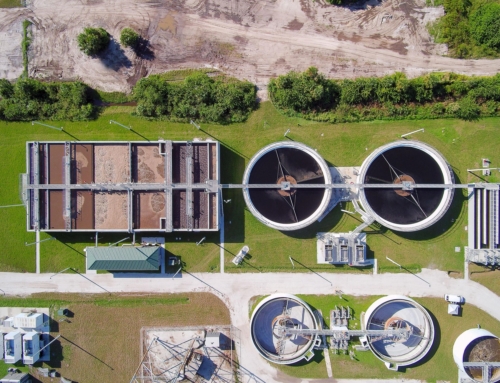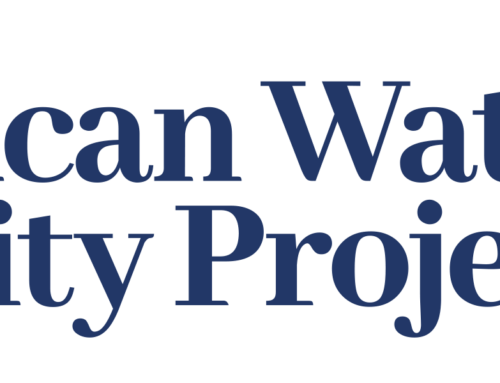
May 22, 2020
Representative Kathy Castor
4144 N. Armenia Avenue
Tampa, FL 33607
Dear Chair Castor,
On behalf of the American Water Security Project1 (AWSP), I’d like to offer our appreciation for your recent comments regarding wastewater infrastructure, clean energy, and climate resiliency in this recent Time Magazine article: https://time.com/5835402/green-stimulus-climate-changecoronavirus/.
Last year, Fatima Ahmad kindly contacted us after AWSP board member Dr. Rob Young, who is also the Director of the Program for the Study of Developed Shorelines, published an editorial in the Tampa Bay Times entitled, “Put Wastewater First in Climate Resilience Planning.” She said you had taken the editorial to heart and would make wastewater resilience a focus of the Select Committee on the Climate Crisis. Again, thank you.
Our organization maintains a collection of data and media coverage documenting Sanitary Sewer Overflows (SSOs) and sewage pollution from Onsite Sewage Treatment & Disposal Systems (OSTDS, i.e. septic tanks) in virtually every state. As many as 75,000 sewage spills occur nationally each year, in addition to leaking effluent from septic tanks. It is well documented and clear that our nation’s wastewater infrastructure is failing, and that we must make significant investments in repairs and upgrades that make our infrastructure functional as we anticipate the increasing stress of future population growth and climate change.
Nowhere is that sad state of affairs more evident than in our home state of Florida, where a 2016 American Society of Civil Engineers report estimated that Florida needs an investment of $18.4 billion just to get our wastewater systems functional to handle existing population needs. However, additional investments will be necessary to account for future population growth and the anticipated impacts of climate change. When combined with the costs of potable water infrastructure needs, The Associated General Contractors of America (AGC) estimates that our nation needs to invest $400 to $600 billion in wastewater and drinking water infrastructure.
We hope that you will share with your colleagues how lack of investment in our water and wastewater infrastructure poses dangerous threats to human health, the environment, and the pillars of our nation’s economy. These threats include reduction in surface and ground water quality, public health threats, water supply deficits, and greenhouse gas production. Here are a few facts:
-
- A National Academy of Sciences Report (2000) indicates that nutrient pollution from human wastewater causes eutrophication of coastal waters, hypoxic “dead zones,” harmful algal blooms, and loss of fisheries and ecosystem services.
- Sewage spills and leaky septic tank effluents introduce dangerous human pathogens into ground and surface waters impacting wildlife and human health.
- Over the past century, modernized wastewater treatment systems have mitigated the spread of human endemic and pandemic diseases, such as cholera and typhoid fever, which have plagued society over past centuries. These systems will continue to mitigate present and future pandemic diseases.
- Wastewater isn’t “waste.” It is a “renewable” resource that needs to be treated and recycled to support future water supplies as increasing population reduces potable water supplies.
- Managing water and wastewater is energy-intensive, expensive, and requires security. To increase efficiency of treatment capacity and effluent quality, as well as decrease greenhouse gas emissions, future wastewater treatment and collection systems require investments in technological advancements, including advanced disinfection techniques and renewable energy power generation.
Our communities remain just as vulnerable to all of the threats listed above as they were before the pandemic. We must emerge from this experience far more resilient than ever. We must invest in infrastructure projects that build equity and equitability into our communities. Such infrastructure investments will create and sustain job growth and protect lower income communities from water contamination and pollution impacts. On the other hand, any approach to climate resilience in urban and rural communities that fails to adequately address wastewater infrastructure is doomed to failure. They will only result in creating sewage motes behind barriers and between buildings. We need Congress to provide adequate funding for water infrastructure projects so the costs aren’t’t overly burdensome on ratepayers.
We encourage you to share this information with your colleagues in the context of the vital importance of a COVID Infrastructure Stimulus package that dedicates significant funding to water infrastructure. This may be a once-in-a-lifetime opportunity to fix one of America’s most significant infrastructure problems. We would like to discuss the potential stimulus package with you further. And, please do not hesitate to contact us if you need more information, citations, or our expertise.
Sincerely,
![]()
Terry Gibson
Government Affairs Director
American Water Security Project
(772) 285-7683
CC: Fatima Ahmad





